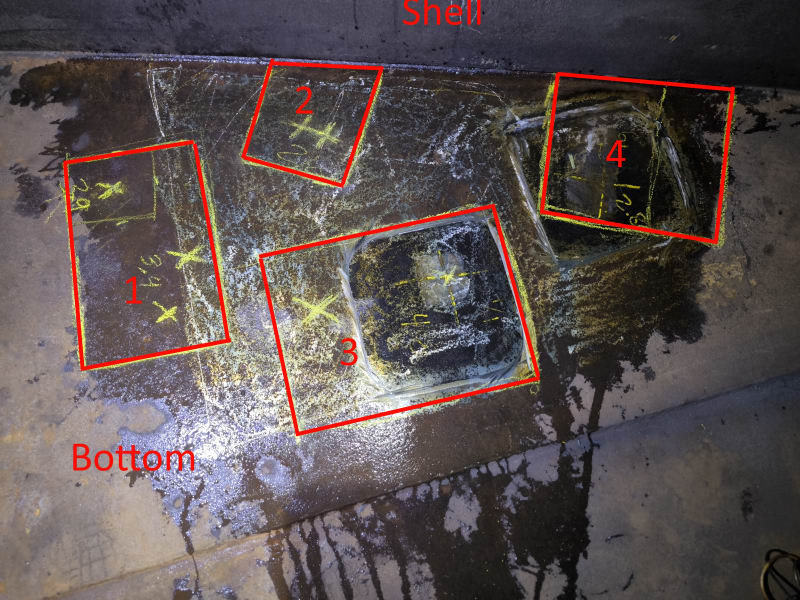Andres Romero
Petroleum
Hello, I work for a client who wants to comply with part 9 of API 653 to repair a bottom that has corrosion on the bottom.
In principle we had considered installing a May 24" patch, but API 653 does not allow it in the critical zone. So we have had to divide it into 4 patches so that it can comply with figure 13 of API 653.
In my opinion, I think it is better to have installed a patch larger than 24", even if it does not comply with the requirements of API 653, than to install 4 patches very close to each other in order to comply with the maximum patch size and minimum distances between welds.
The damage mechanism is corrosion due to pitting located at the bottom. There is no widespread corrosion.
Why can't I install the patch larger than 24"?
What do you think is the best repair if the client does not want to replace the sheet metal?
I attach a photo of the situation of the patches.

In principle we had considered installing a May 24" patch, but API 653 does not allow it in the critical zone. So we have had to divide it into 4 patches so that it can comply with figure 13 of API 653.
In my opinion, I think it is better to have installed a patch larger than 24", even if it does not comply with the requirements of API 653, than to install 4 patches very close to each other in order to comply with the maximum patch size and minimum distances between welds.
The damage mechanism is corrosion due to pitting located at the bottom. There is no widespread corrosion.
Why can't I install the patch larger than 24"?
What do you think is the best repair if the client does not want to replace the sheet metal?
I attach a photo of the situation of the patches.

